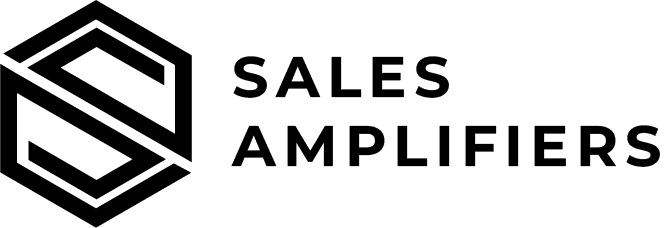- By Noor Ur Rehman
- February 7, 2025
- No Comments
In the ever-evolving landscape of digital marketing, optimizing title tag & meta description optimization remains a cornerstone of effective Search Engine Optimization (SEO). These HTML elements not only influence how search engines interpret your content but also play a pivotal role in enticing users to click through to your website. This comprehensive guide delves into the intricacies of crafting compelling title tags and meta descriptions, offering best practices to enhance your site’s visibility and click-through rates (CTR).
Table of Contents
ToggleUnderstanding Title Tag & Meta Description Optimization
Title Tags are HTML elements that specify the title of a web page. They appear as clickable headlines on Search Engine Results Pages (SERPs) and are crucial for both SEO and user experience. A well-crafted title tag provides a concise and accurate description of a page’s content, helping search engines understand its relevance to a query.
Meta Descriptions are brief summaries, typically up to 155 characters, that describe the content of a page. Displayed beneath the title tag in SERPs, meta descriptions serve as a preview, influencing a user’s decision to visit your page. While not a direct ranking factor, compelling meta descriptions can significantly impact CTR, indirectly affecting your site’s performance.
The Importance of Title Tag & Meta Description Optimization
Title tag & Meta Description Optimization are paramount in conveying the context of your content to search engines and users alike. They serve multiple functions:
Search Engine Rankings: Title tags are considered one of the most important on-page SEO factors. Including relevant keywords can improve your page’s visibility in search results.
User Experience: A clear and descriptive title helps users understand what to expect from your page, increasing the likelihood of engagement.
Social Sharing: When your content is shared on social media platforms, the title tag often serves as the headline, influencing click-through rates.
Best Practices for Crafting Effective Title Tags
Incorporate Primary Keywords Early: Place your main keyword near the beginning of the title to ensure it captures attention and is not truncated in SERPs.
Maintain Optimal Length: Aim for title tags between 50-60 characters to prevent truncation in search results. This ensures the entire title is visible to users.
Use Descriptive and Compelling Language: Craft titles that accurately describe the page content and entice users to click. Avoid vague or generic titles like “Home” or “Services.”
Include Branding When Appropriate: For homepage title tags, consider placing your brand name at the beginning. For internal pages, include it at the end to maintain focus on the content.
Avoid Keyword Stuffing: Ensure your title reads naturally and is not overloaded with keywords, which can deter users and may be penalized by search engines.
Utilize Numbers and Trigger Words: Incorporate numbers or words like “How,” “Best,” or “Ultimate” to make titles more engaging and clickable.
The Role of Meta Descriptions in SEO
While meta descriptions are not a direct ranking factor, they significantly influence user behavior and CTR. A well-written meta description can:
Enhance Visibility: By providing a concise summary of your page’s content, meta descriptions help users determine if your page meets their needs.
Improve CTR: Compelling descriptions encourage users to click on your link over others in the SERP.
Support Social Sharing: When content is shared, the meta description often appears as the preview text, impacting engagement on social platforms.
Best Practices for Writing Meta Descriptions
Keep It Concise: Aim for meta descriptions between 150-160 characters to ensure they display fully in search results.
Use Active Voice and Include a Call-to-Action: Encourage users to take action with phrases like “Learn more,” “Discover,” or “Get started.”
Incorporate Relevant Keywords: Include primary and secondary keywords naturally to align with user search queries. This can also help search engines understand the page’s content.
Ensure Uniqueness: Each page should have a distinct meta description that accurately reflects its content to avoid confusion and potential penalties.
Align with Page Content: The meta description should accurately summarize the page’s content to meet user expectations and reduce bounce rates.
Highlight Unique Selling Points: Emphasize what sets your content apart, such as special offers, unique insights, or exclusive information.
Common Mistakes to Avoid
Duplicate Titles and Descriptions: Using the same title tags and meta descriptions across multiple pages can confuse search engines and users, leading to lower rankings and CTR.
Overlooking Mobile Optimization: Ensure your titles and descriptions are optimized for mobile devices, where screen space is limited.
Neglecting Updates: Regularly review and update your title tags and meta descriptions to align with current SEO trends and changes in your content.
Tools to Aid Optimization
Several tools can assist in crafting effective title tags and meta descriptions:
Yoast SEO: A popular WordPress plugin that provides real-time feedback on title and meta description length, keyword usage, and overall SEO.
SEMrush: Offers insights into competitors’ title tags and meta descriptions, helping you identify opportunities for improvement.
Ahrefs: Provides comprehensive analysis of your site’s SEO
Conclusion
Search engine optimization (SEO) greatly depends on effective title tag and meta description optimization which many marketers tend to ignore. Search engine rankings together with user engagement depend on these elements at the first impression stage of search results. Organizing keywords effectively in titles plus writing attention-grabbing descriptions helps raise both search visibility and the number of users clicking on search results.




